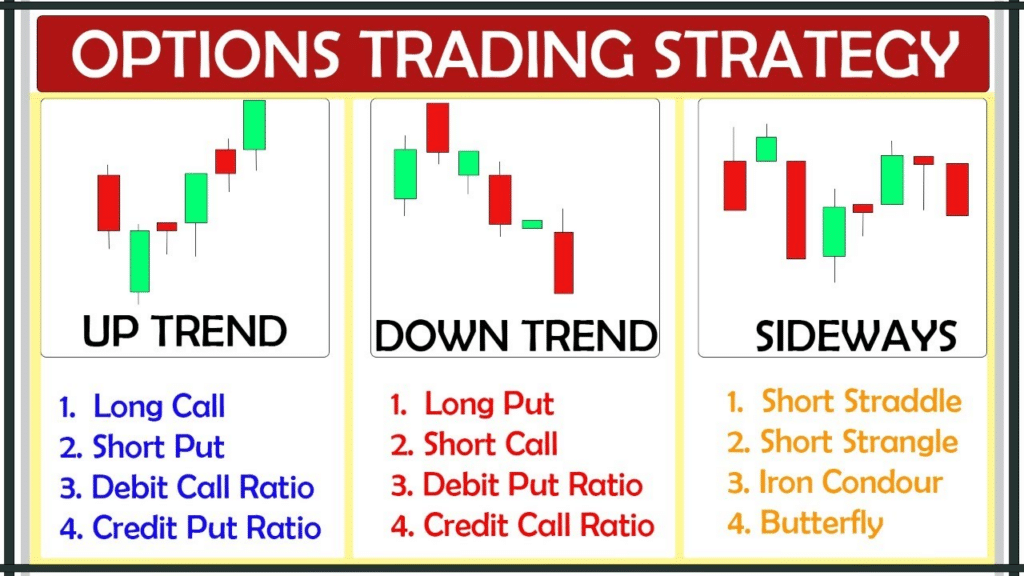Have you ever wondered how to harness the power of options to amplify your financial returns? Options, financial instruments that grant you the right, but not the obligation, to buy or sell an underlying asset, offer a myriad of opportunities for profit generation. However, navigating the intricate world of options trading requires a solid understanding of the concepts, strategies, and risks involved.

Image: forexercourse.com
In this comprehensive guide, we will embark on a journey to unravel the complexities of option trading. From the basics to advanced strategies, we will shed light on everything you need to know to make informed decisions and potentially reap the rewards of this dynamic market.
Understanding the Fundamentals of Option Trading
Options are contracts that give you the option, not the obligation, to buy (call option) or sell (put option) an underlying asset, such as a stock, bond, or commodity, at a set price (strike price) by a specific date (expiration date). As the buyer of an option, you pay a premium to the seller in exchange for this right.
The underlying asset, strike price, and expiration date are crucial factors that determine the value and behavior of an option. The value of an option is derived from the difference between the market price of the underlying asset and the strike price. When the market price moves in your favor, you have the potential to profit by exercising your option or selling it for a higher premium.
Options are versatile instruments that can be used to speculate on price movements, hedge against risk, or generate income through various strategies. The key to successful option trading lies in understanding the different types of options, their characteristics, and the underlying market dynamics.
Types of Options and Their Strategies
There are two main types of options: call options and put options. Call options give you the right to buy the underlying asset, while put options give you the right to sell. Each type can be further classified into two primary strategies: long and short.
-
Long Call: The buyer of a long call option expects the price of the underlying asset to rise. They can exercise their right to buy the asset below the market price, or simply sell the option for a profit if its premium increases.
-
Short Call: The seller of a short call option anticipates the price of the underlying asset to fall or remain stable. They sell the option and receive a premium, and their potential profit or loss is limited to the premium received.
-
Long Put: The buyer of a long put option expects the price of the underlying asset to decline. They can exercise their right to sell the asset above the market price, or sell the option for a profit if its premium increases.
-
Short Put: The seller of a short put option believes that the price of the underlying asset will rise or remain stable. They sell the option and receive a premium, and their potential loss is limited to the difference between the strike price and the current market price.
Essential Option Trading Strategies
Once you have grasped the basics of option types, it’s time to explore some of the most popular and effective option trading strategies. These strategies can be customized to suit your individual trading goals and risk tolerance.
-
Covered Call: The trader sells (writes) a call option against an underlying asset they already own. This strategy aims to generate income by selling the option premium while limiting the potential loss to the difference between the current market price and the strike price.
-
Protective Put: The trader buys a put option to protect their long position in an underlying asset from a potential decline in its price. This strategy serves as insurance against significant losses, but it comes at a cost, as the premium must be paid upfront.
-
Thetagang: This strategy involves selling options with a short time to expiration. The goal is to collect the options premium while benefiting from the decay in the option’s value due to the passage of time.
-
Straddle: This strategy involves simultaneously buying both a call and a put option with the same strike price and expiration date. A straddle bet on a high volatility outcome, where the price of the underlying asset is expected to experience significant movement.
-
Strangle: Similar to a straddle, this strategy involves buying out-of-the-money call and put options with different or the same strike prices and the same expiration date. It is suitable for neutral to moderately bullish or bearish market views.

Image: www.youtube.com
Advanced Option Trading Techniques
As your understanding of option trading deepens, you may wish to explore more advanced techniques to maximize your potential returns. These techniques include:
-
Greeks: Greeks are mathematical measures that help to assess the sensitivity of an option’s price to changes in underlying assumptions. Understanding and using Greeks can enhance your option trading precision and efficiency.
-
Volatility: Understanding the role of volatility in option pricing is crucial. Volatility measures the amplitude of price fluctuations and is often incorporated into trading strategies to take advantage of price swings.
-
Implied Volatility: Implied volatility reflects the market’s expectations for the volatility of the underlying asset. It can be used to assess option pricing and make informed trading decisions.
Learn Option Trading Course

Image: investgrail.com
Conclusion
The world of option trading offers a rich and complex landscape of opportunities for financial growth. By demystifying the concepts, strategies, and risks involved, we hope to empower you to embark on this rewarding journey with confidence. Remember, successful option trading is not about luck but rather about knowledge, discipline, and a willingness to continuously learn and adapt.
We encourage you to explore further resources,






